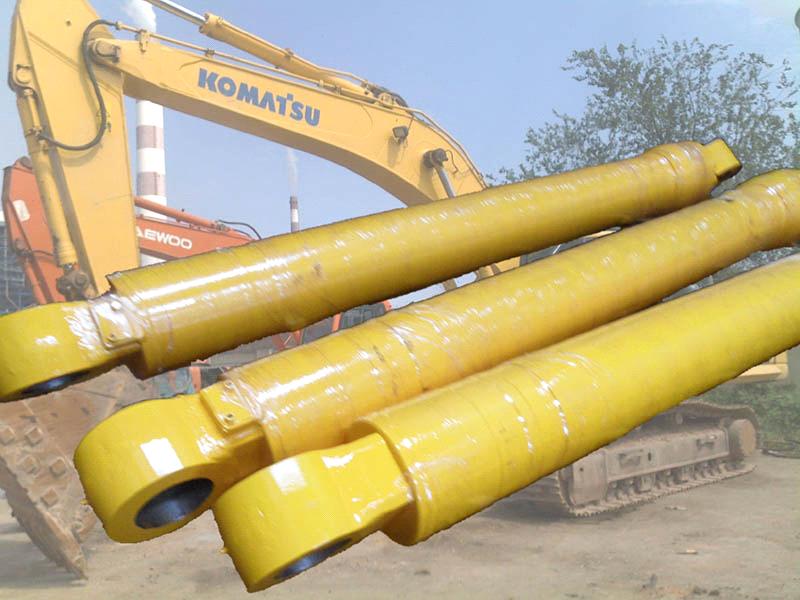Hydraulic cylinders play a vital role in the functioning of excavators by generating and transmitting forces needed to lift, move and adjust the bucket and other components. Different types of hydraulic cylinders power the various movements of an excavator. Let’s explore some key hydraulic cylinders used in excavators.
4 Types Of Cylinder For Excavators

Arm Cylinder Assembly: The arm cylinder assembly consists of two cylinders that power the raising and lowering of the excavator’s arm. The large reach cylinder extends the arm and the swivel cylinder swings the arm from side to side. These mini excavator hydraulic cylinders provide the digging force for the attachment.
Cilindro da Caçamba: The bucket cylinder is used to control the opening and closing of the bucket attachment. When pressurized hydraulic fluid enters the cylinder, the rod extends and pushes the bucket switch to open the bucket. When the fluid exits, the rod retracts to close the bucket.
cilindro da lança: The boom cylinder is used to raise and extend the boom of larger excavators. It helps control the height and reach of the boom, which in turn affects the digging depth and digging radius.
Swing Cylinder: The swing cylinder provides the hydraulic power to rotate the upper body of the excavator. It allows the cabin and arm to swing, enabling easier access to the work area.
Key Excavator Hydraulic Cylinders Provide The Various Movements
These key excavator hydraulic cylinders – arm cylinder assembly, cilindro da caçamba, boom cylinder and swing cylinder – provide the various movements needed for digging and operating an excavator. The strength, size and durability of these hydraulic cylinders vary depending on the size and application of the specific model of excavator.
Common Issues That Can Arise With Hydraulic Cylinders
Leakage of hydraulic fluid from seals or shafts is a major issue that can affect cylinder performance. It can be caused by damage, wear and tear of seals over time or contaminants in the fluid. Leakage leads to loss of hydraulic pressure and cylinder dysfunction.
The piston rod can get stuck inside the cylinder due to accumulation of dirt, debris or excessive wear of components. This prevents the rod from extending or retracting smoothly and efficiently.
The cylinder may buckle and fail under excessive load due to overloading, material defects or lack of support. Buckling reduces the strength and service life of the cylinder significantly.
Presence of air in the hydraulic lines can cause sluggish cylinder response, inconsistent motions, erratic movements and noise issues. It needs to be properly bled out of the system.
